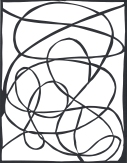 Anxiety is on the rise in the teen landscape. The alarming rate of growth in this trend has been well documented (https://www.nytimes.com/2017/10/11/magazine/why-are-more-american-teenagers-than-ever-suffering-from-severe-anxiety.html). Do you know a teen who is suffering from anxiety or depression? What can you do to help them?
Anxiety is on the rise in the teen landscape. The alarming rate of growth in this trend has been well documented (https://www.nytimes.com/2017/10/11/magazine/why-are-more-american-teenagers-than-ever-suffering-from-severe-anxiety.html). Do you know a teen who is suffering from anxiety or depression? What can you do to help them?
As an art therapist and a marriage and family therapist, I have spent a few decades on the front lines of this crisis, working with teens suffering from anxiety, depression, unresolved trauma, addiction etc. My encounters with teens in crisis have mostly occurred in inpatient psychiatric facilities following suicide attempts and other risky behavior. Observing the human race from this very unusual vantage point led me to begin asking two questions to the teens I encountered. I have now asked thousands of teens ( post crisis) the same two questions:
If you would have/could have communicated better with your loved ones about how you were truly feeling, would you have tried to kill yourself?
If you had more rules/structure/boundaries set up at home, would you have ended up in a psychiatric facility?
Almost every teen I have asked responded with a sheepish, “NO” to both questions, leading me to the conclusion that families, loved ones, schools, coaches, social pressures and the system all play a huge part in the crisis unfolding before our eyes. It is tempting to blame the child or teen for their situation, (especially when the standard procedure involves sending them away from their families to get “fixed” in inpatient facilities), often leaving them feeling tremendous shame in their extreme actions. When we can truly explore our system and our contribution to their situation, we often discover that extreme teen behavior is the symptom or reaction to an entire system out of whack.
Much of the current literature on teens and anxiety blame the post “helicopter parent” world, which has not let this generation have enough negative experiences to learn how to recover from small emotional injuries. Perhaps there is some truth to this, but the real question to sort out how to create resilient teens, and how to help them navigate through this world we have created for them.
The rise in smart phone technology to the teen experience has added an unprecedented new frontier to this unfolding anxiety crisis. Many of us have forgotten how quickly this technology has crept into our existence, and many adults are utterly shocked when they discover how of their child’s existence is wrapped up into their digital realities. As adults travel down the same path of being deeply connected to their devices, it is not surprising that our children are mimicking our behavior.
Art therapy is a form of therapy that offers families an opportunity to communicate their authentic feelings, and work toward healthier functioning as a whole system. Using simple visual art directives during therapy sessions, families who engage in therapy with trained art therapists often get straight to the point much, much faster than a typical talk therapy session.
Teens are notoriously cryptic communicators, contributing to the crisis in many families of simply having no idea of the level of emotional pain their child has endured. Offering your teen some time for honest, old-fashioned, screen free, communication is often the first step in creating a healthy place for your teen to open up.
Please explore the possibility of finding a time for some honest communication with your teen. If you find that your teen is experiencing something bigger than what you can handle, please consider seeking counseling for your family. If you need help in finding the best therapist to meet your needs, please contact me and I can assist in this journey. My art therapy practice is in the state of Kansas, but I can offer you assistance in locating a therapist wherever you live: heartlandarttherapy@gmail.com.
The art featured intros post was created by this blog author, Sherri Jacobs, and is part of a series of paper cuts entitled, “The Therapeutic Journey.”